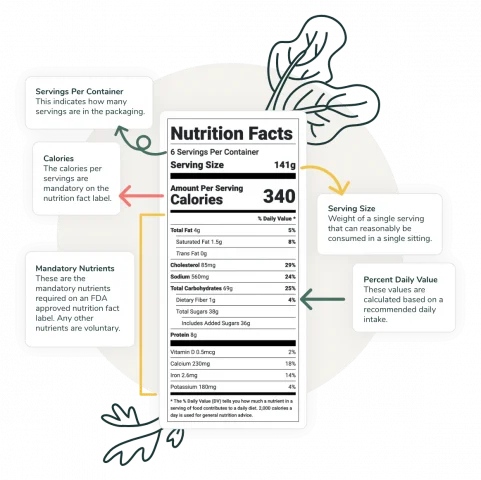Custom Nutrition Facts Label
A custom nutrition facts label is the perfect way to show off your nutritional knowledge. But what exactly is a custom nutrition facts label?
Custom nutrition facts labels are a great way to make your product stand out from the competition. By including all of the required information, as well as some additional information that may be of interest to your customers, you can create a label that is both informative and visually appealing.
As a business owner, you are responsible for ensuring that your food products are accurately labeled. This includes providing accurate nutrition information on your product labels. The FDA’s nutrition facts label is the standard format for this information, and all food products must comply with these regulations.
However, you may also choose to include a custom nutrition facts label on your product. This is allowed as long as the information on the label is accurate and complies with FDA regulations.
Custom nutrition facts labels can be a useful marketing tool. They can help you highlight the health benefits of your product and make it stand out from other similar products on the shelves. However, you should be aware that there are some risks associated with custom nutrition facts labels. If the information on your label is inaccurate, it could lead to consumer confusion or even legal action.
How to Create an FDA-Compliant Nutrition Facts Label
There’s a lot that goes into creating a nutrition facts label that is compliant with FDA regulations. But don’t worry, we’re here to help!
Creating an FDA-compliant nutrition facts label requires careful planning and attention to detail. But with a little time and effort, it’s something any company can do.
The FDA has specific requirements for the format and content of nutrition facts labels, including the size and placement of the label on food packaging. The FDA also requires that certain information be included on the label, such as the product’s name, ingredient list, net quantity of contents, and nutrition facts. In addition to meeting the FDA’s requirements, many companies choose to include additional information on their nutrition facts labels. This may include things like allergen statements, country of origin, or sustainability claims.
When done correctly, an FDA-compliant nutrition facts label can be a valuable tool for consumers looking to make informed choices about the food they eat. It can also help companies communicate the nutritional value of their products clearly and accurately.

FAQ
Food Label Maker’s main goal is to help businesses all over the world to create their own nutrition facts label in the easiest way possible. You can easily create your nutrition facts label by using our software where it automatically calculates and creates your label in simple steps. Also, you can hire one of our nutrition experts to help you create the perfect nutrition facts label from start to finish.
Custom nutrition facts label is not free of charge. We do have several plans where you can create your custom label:
Monthly or yearly plan.
You can check our different plans right here!
There are many rules to follow to create a FDA-compliant food label. Thankfully, our software automatically creates a FDA-compliant food label for you. You can also check out our blogs where we have covered every detail on the rules and regulations of creating an FDA-compliant food label.
You cannot have the same label for both the U.S. and Canada since the nutrition facts label in Canada is regulated by the Canadian Food Inspection Agency (CFIA) while the U.S. nutrition facts label is regulated by the U.S. Department of Agriculture (USDA). They are mainly similar but with little differences that you should take into consideration.